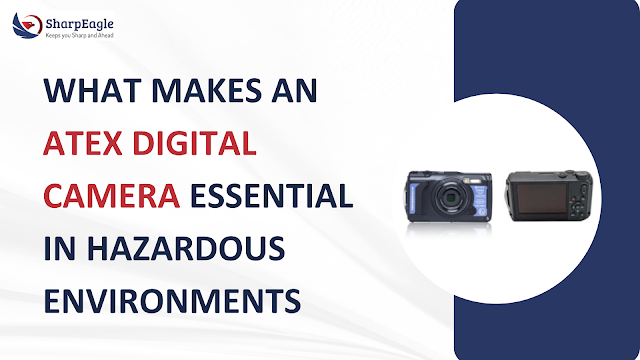Choosing the Right Explosion Proof Lighting for Your Industry
In environments where flammable gases, vapors, or dust are present, standard lighting fixtures simply won’t do. These hazardous locations demand specialized equipment, particularly explosion proof lighting, to ensure safety, reliability, and regulatory compliance. Whether it’s an offshore oil rig or an automotive assembly line, choosing the right lighting is critical to prevent ignition risks and maintain efficient operations.
In this blog, we’ll explore how to select the right explosion proof lighting across several industries, including Oil & Gas, Industrial, Manufacturing, Warehousing, Maritime, Logistics, Rigs (Onshore & Offshore), and Automobile sectors.
What Is Explosion Proof Lighting?
Explosion proof lighting is specifically designed to contain sparks or flames within the housing of the fixture, preventing the ignition of flammable substances in the surrounding environment. These lights are essential in classified hazardous zones (Zone 1, Zone 2, or Division 1 & 2), where explosive gases or dust may be present.
1. Oil & Gas Industry
In the oil and gas sector, both onshore and offshore environments are rife with explosive gases such as methane and hydrogen sulfide. Equipment must adhere to the strictest standards, like ATEX, IECEx, and NEC/UL certifications.
Key Considerations:
- Zone 1 & Zone 2 certified lighting
- Marine-grade corrosion-resistant materials
- High lumen output for large outdoor spaces
- Explosion proof LED floodlights for rigs and refineries
2. Industrial Facilities
Industrial plants often handle flammable liquids, chemicals, or combustible dust, depending on the operation. Explosion proof lighting is required in areas such as chemical mixing rooms, paint spray booths, and fuel storage zones.
Key Considerations:
- Dust-tight fixtures with appropriate zone ratings
- High-temperature resistance
- Durable mounting options
3. Manufacturing Industry
Manufacturing environments involve high activity, machinery, and sometimes volatile materials like solvents, lubricants, and fuels. The presence of dust and vapor in certain production lines can be a fire hazard.
Key Considerations:
- Efficient task lighting with wide beam angles
- Anti-glare options to reduce worker fatigue
- Energy-efficient LEDs for cost savings
4. Warehousing
Warehouses storing chemicals, flammable goods, or aerosols must adhere to strict fire and explosion safety protocols. In addition, they need lighting that ensures visibility over large areas and high shelves.
Key Considerations:
- Wide-area illumination
- Long lifespan to reduce maintenance disruptions
- Motion-sensor options for energy savings
5. Maritime Industry
Ships, ports, and offshore platforms face exposure to saltwater, high humidity, and explosive vapors — especially when transporting fuel or chemicals.
Key Considerations:
- Marine-grade corrosion protection
- Shock and vibration resistance
- Compact designs for confined spaces
6. Logistics & Freight
In logistics hubs that store or transport flammable goods, such as batteries, fuels, or chemicals, explosion proof lights ensures compliance and safety, especially in cargo handling areas.
Key Considerations:
- Easy installation in warehouses and loading docks
- Battery backups for emergency lighting
- Robust fixtures for indoor and outdoor use
7. Onshore and Offshore Rigs
These rigs operate in extreme environments where flammable gases are omnipresent. Lighting systems must be rugged, energy-efficient, and certified for explosive atmospheres.
Key Considerations:
- Zone 1/Division 1 certified fixtures
- Corrosion resistance from salt, oil, and gas
- Low maintenance requirements
8. Automobile Industry
In automotive manufacturing and servicing facilities, flammable liquids like gasoline, solvents, and lubricants are commonly used. Spray booths and battery storage areas are especially prone to explosive risks.
Key Considerations:
- Anti-static, dust-tight lighting
- Task lighting with accurate color rendering
- Energy-efficient operation for 24/7 environments
Final Tips for Choosing the Right Fixture
- Verify Certifications: Ensure compliance with ATEX, IECEx, or UL/NEC standards for your region and zone classification.
- Opt for LEDs: They offer better efficiency, longer lifespan, and generate less heat.
- Check IP Rating: IP66 or higher is ideal for dusty and wet environments.
- Mounting Flexibility: Choose mounting styles (wall, ceiling, pole, pendant) based on space constraints.
- Durability: Look for vibration resistance and corrosion-proof materials for harsh conditions.
Conclusion
Choosing the right explosion proof portable lighting is not just about compliance; it’s about protecting lives, ensuring business continuity, and enhancing operational efficiency. Each industry has its own unique hazards and environmental challenges, which is why SharpEagle offers customized lighting solutions to meet your exact requirements.
Whether you operate an offshore rig, a warehouse, or an automotive assembly line, our explosion proof lighting ensures you stay safe, compliant, and productive.
Get in touch with SharpEagle Technology today to find the right explosion proof lighting solution for your industry.




Comments
Post a Comment